Working with living organisms is difficult because it must continually be cared for and renewed, or frozen in liquid nitrogen to preserve it for long periods of time. For ease of access, I keep an archived collection of bacterial colonies in a liquid nutrient-rich media and transfer them into new media on a weekly basis. Maintaining this can be tedious and time-consuming, but is necessary for bacterial survival, as they could potentially die off due to lack of nutrients and build-up of waste products if I don’t.
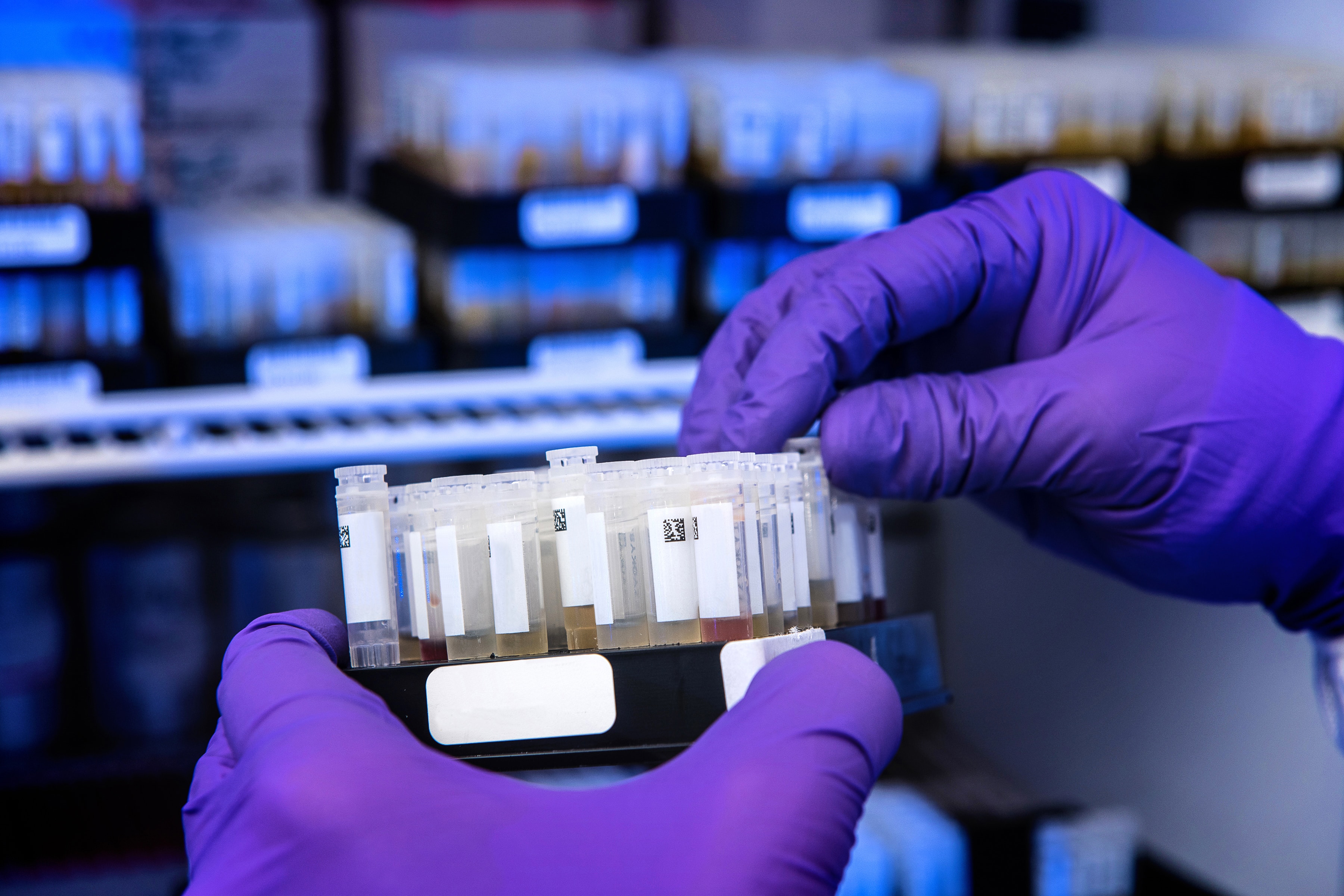
I transfer this bacterial suspension to nutrient agar plates as well, so I have “paint” to create art with as solid colonies is much easier than liquid suspension. This agar plate serves as my microbiological easel, a palette of colonies of different colours I can use to produce art.
Instead of subjecting everyone to another wall of text, I have created some graphics detailing the process of culturing and


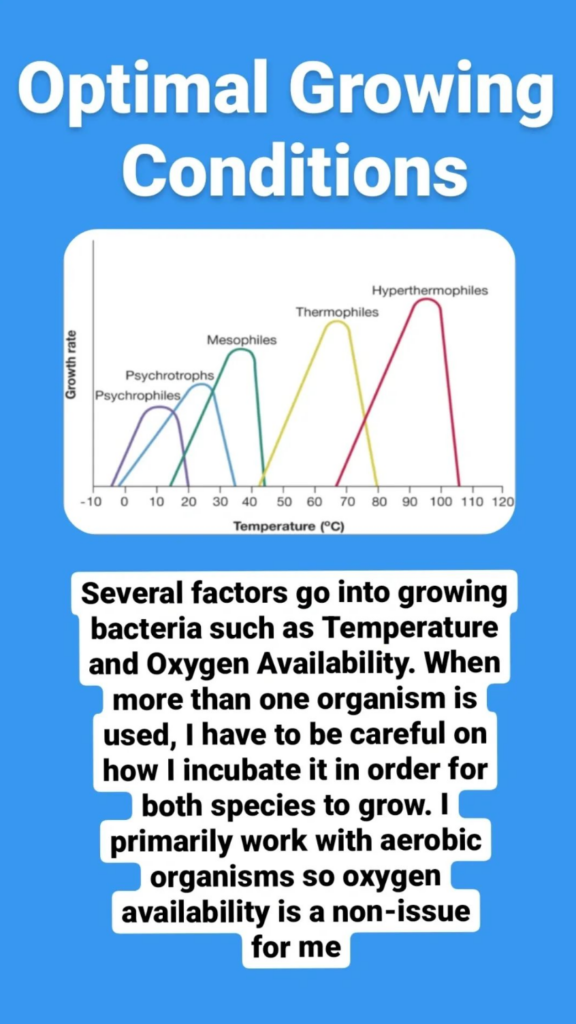
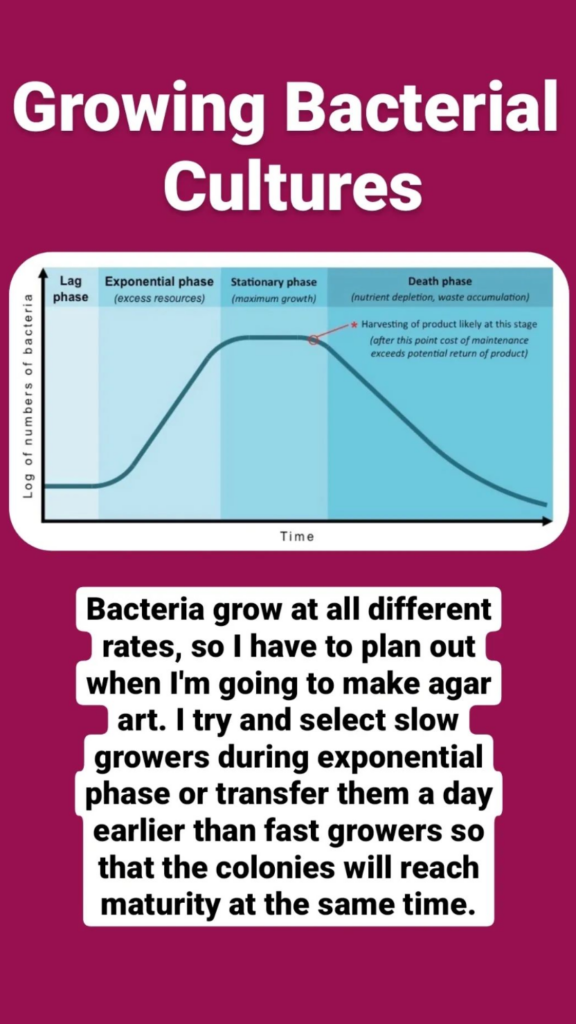


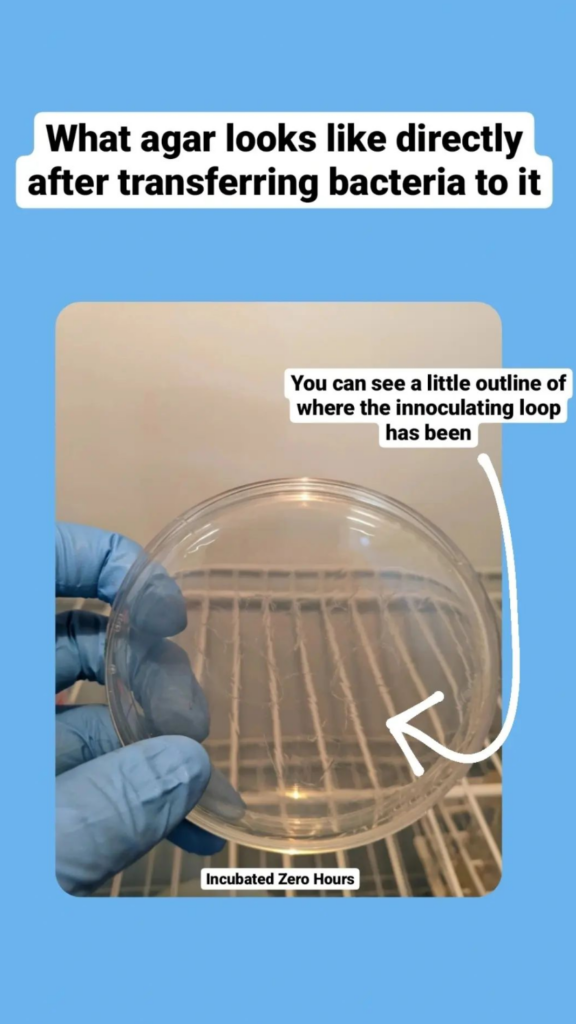
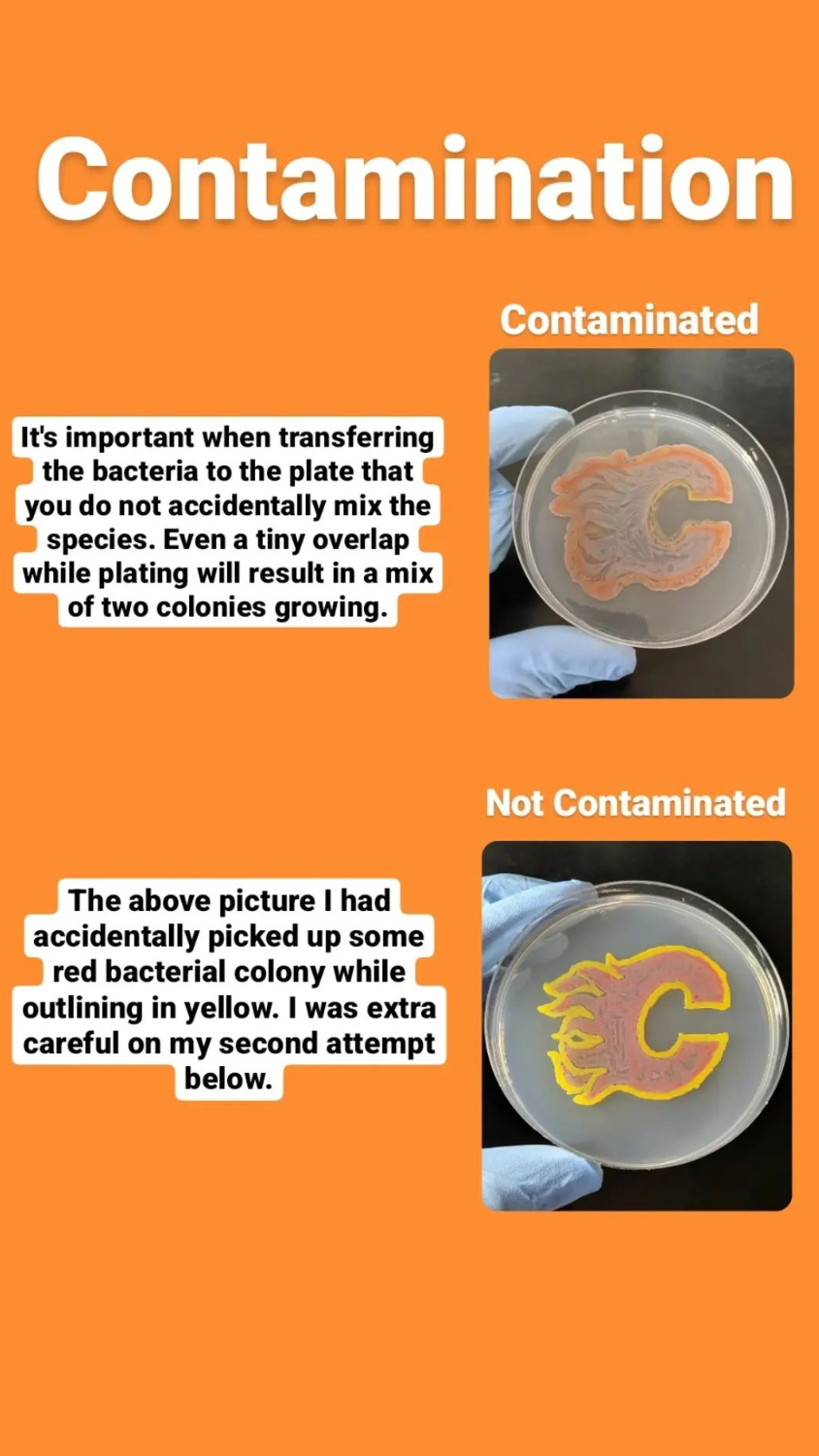
So how does one start? Once you have your mature bacterial colonies and agar plates ready to use, it is time to get to work! The inoculating loop is a tool used in labs which are used to transfer bacteria between plates and media. In the context of art, the inoculating loop is the microbiologist’s paintbrush.
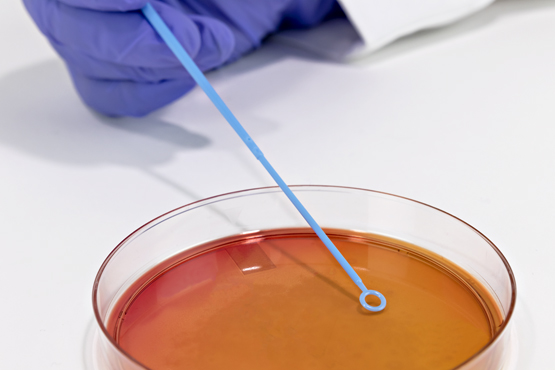
Due to the small size of the agar plates, I will be using a dissecting scope to help me make sure my edges are sharp and that I do not cross-contaminate bacterial species while I’m painting. Transferring bacteria onto an agar plate is an invisible process at first, as the colonies you paint on are virtually impossible to see and requires concentration to ensure you are not overlapping any areas or you may risk contamination.
Comparison of cross-contaminated versus isolated:
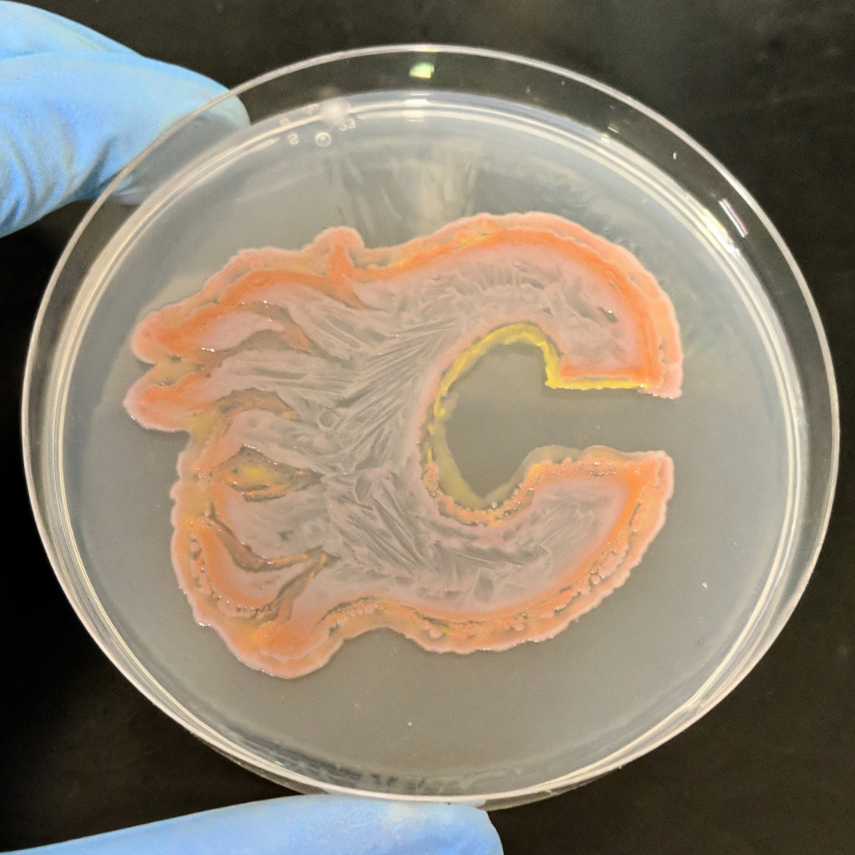
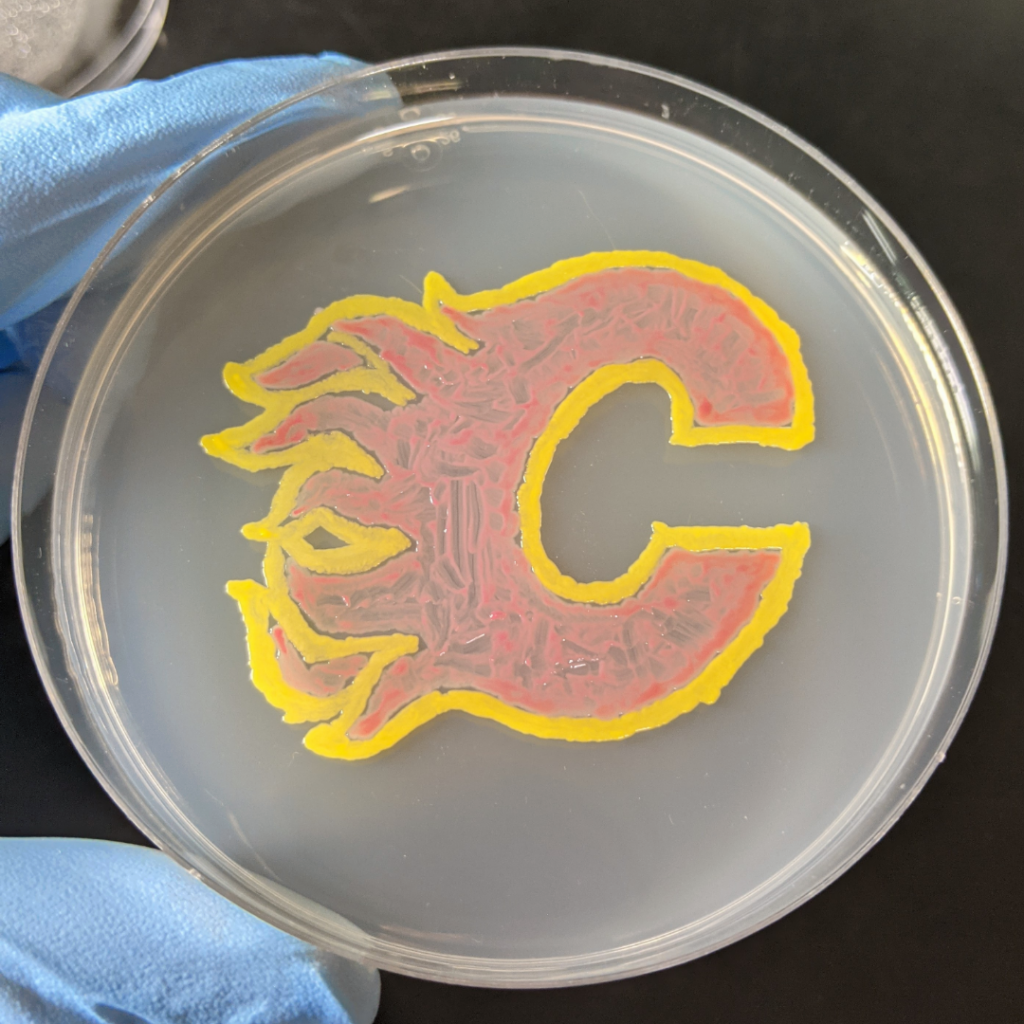
Complete agar art before incubation. Can you tell what it is?
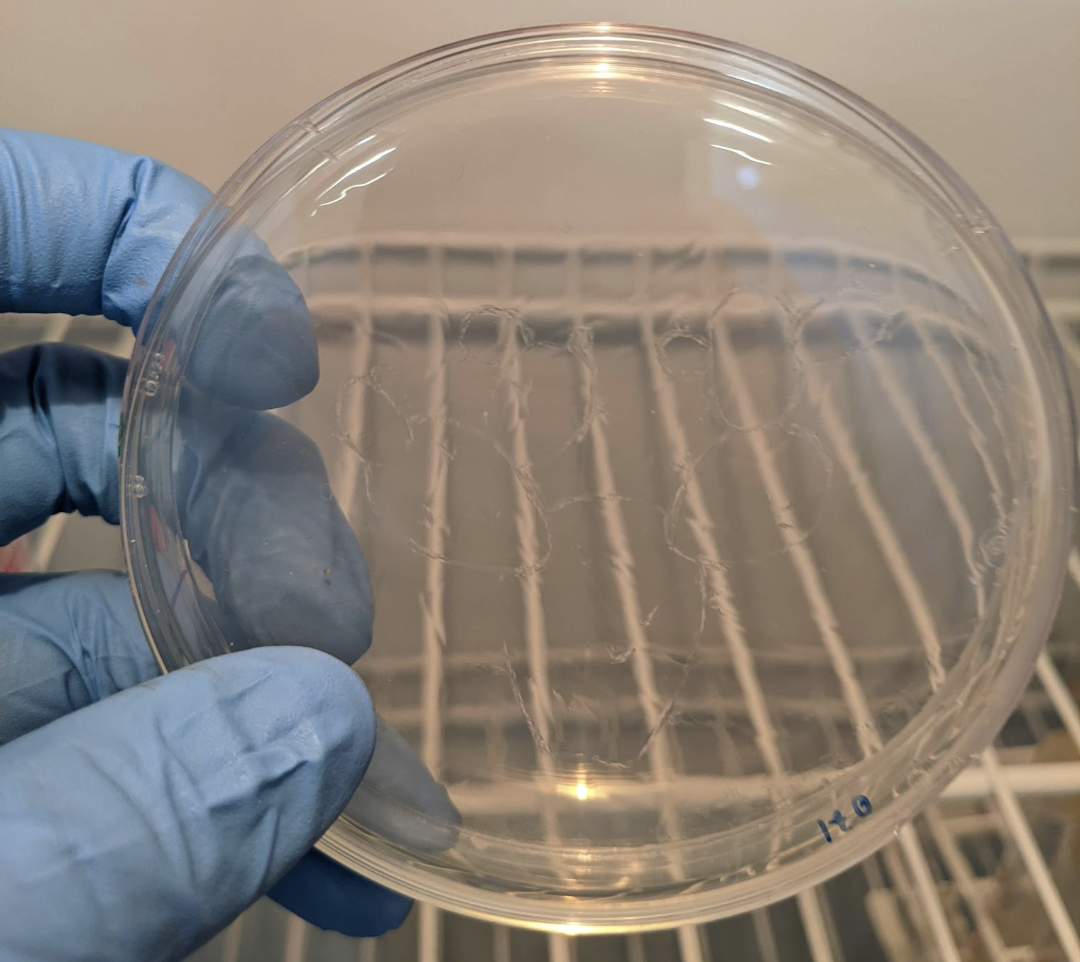
Next week I will be working with Staphylococcus aureus and Pseudomonas aeruginosa to create some Halloween themed art pieces. I am super excited for next week when I can showcase some SPOOKY art!
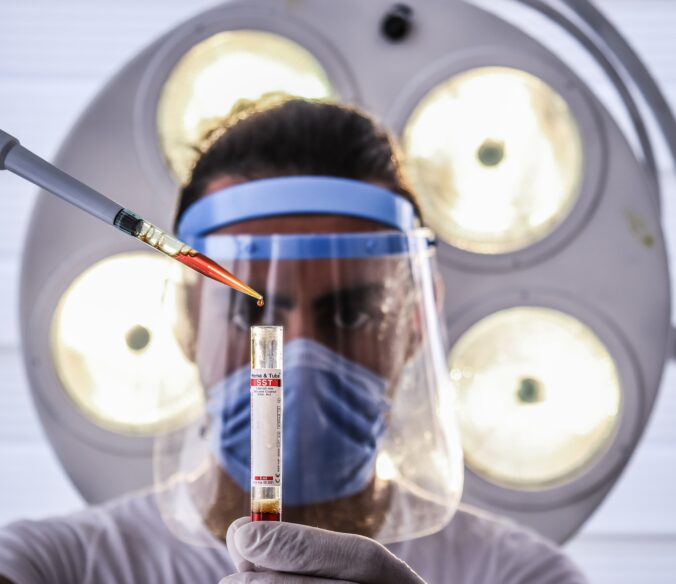
Leave a Reply
You must be logged in to post a comment.